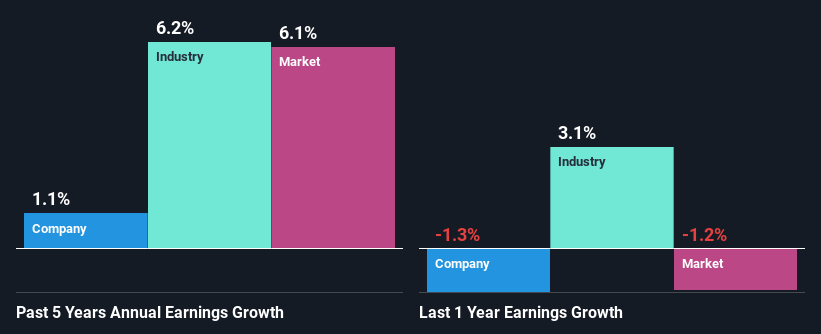TangShan Port GroupLtd's (SHSE:601000) stock is up by a considerable 5.9% over the past month. But the company's key financial indicators appear to be differing across the board and that makes us question whether or not the company's current share price momentum can be maintained. Specifically, we decided to study TangShan Port GroupLtd's ROE in this article.
Return on Equity or ROE is a test of how effectively a company is growing its value and managing investors' money. In short, ROE shows the profit each dollar generates with respect to its shareholder investments.
How Is ROE Calculated?
Return on equity can be calculated by using the formula:
 Return on Equity = Net Profit (from continuing operations) ÷ Shareholders' Equity
Return on Equity = Net Profit (from continuing operations) ÷ Shareholders' Equity
So, based on the above formula, the ROE for TangShan Port GroupLtd is:
9.2% = CN¥2.0b ÷ CN¥22b (Based on the trailing twelve months to September 2024).
The 'return' is the yearly profit. Another way to think of that is that for every CN¥1 worth of equity, the company was able to earn CN¥0.09 in profit.
What Is The Relationship Between ROE And Earnings Growth?
So far, we've learned that ROE is a measure of a company's profitability. Depending on how much of these profits the company reinvests or "retains", and how effectively it does so, we are then able to assess a company's earnings growth potential. Generally speaking, other things being equal, firms with a high return on equity and profit retention, have a higher growth rate than firms that don't share these attributes.
TangShan Port GroupLtd's Earnings Growth And 9.2% ROE
On the face of it, TangShan Port GroupLtd's ROE is not much to talk about. However, the fact that the its ROE is quite higher to the industry average of 6.3% doesn't go unnoticed by us. Having said that, TangShan Port GroupLtd's net income growth over the past five years is more or less flat. Remember, the company's ROE is a bit low to begin with, just that it is higher than the industry average. Therefore, the low to flat growth in earnings could also be the result of this.
Next, on comparing with the industry net income growth, we found that TangShan Port GroupLtd's reported growth was lower than the industry growth of 6.2% over the last few years, which is not something we like to see.

The basis for attaching value to a company is, to a great extent, tied to its earnings growth. It's important for an investor to know whether the market has priced in the company's expected earnings growth (or decline). Doing so will help them establish if the stock's future looks promising or ominous. Is 601000 fairly valued? This infographic on the company's intrinsic value has everything you need to know.
Is TangShan Port GroupLtd Using Its Retained Earnings Effectively?
With a high three-year median payout ratio of 65% (implying that the company keeps only 35% of its income) of its business to reinvest into its business), most of TangShan Port GroupLtd's profits are being paid to shareholders, which explains the absence of growth in earnings.
Moreover, TangShan Port GroupLtd has been paying dividends for at least ten years or more suggesting that management must have perceived that the shareholders prefer dividends over earnings growth.
Summary
Overall, we have mixed feelings about TangShan Port GroupLtd. Specifically, the low earnings growth is a bit concerning, especially given that the company has a respectable rate of return. Investors may have benefitted, had the company been reinvesting more of its earnings. As discussed earlier, the company is retaining a small portion of its profits. Having said that, looking at the current analyst estimates, we found that the company's earnings are expected to gain momentum. To know more about the latest analysts predictions for the company, check out this visualization of analyst forecasts for the company.
Have feedback on this article? Concerned about the content? Get in touch with us directly. Alternatively, email editorial-team (at) simplywallst.com.
This article by Simply Wall St is general in nature. We provide commentary based on historical data and analyst forecasts only using an unbiased methodology and our articles are not intended to be financial advice. It does not constitute a recommendation to buy or sell any stock, and does not take account of your objectives, or your financial situation. We aim to bring you long-term focused analysis driven by fundamental data. Note that our analysis may not factor in the latest price-sensitive company announcements or qualitative material. Simply Wall St has no position in any stocks mentioned.

